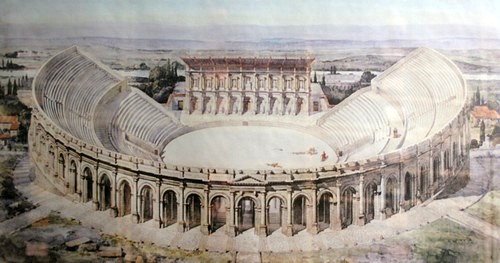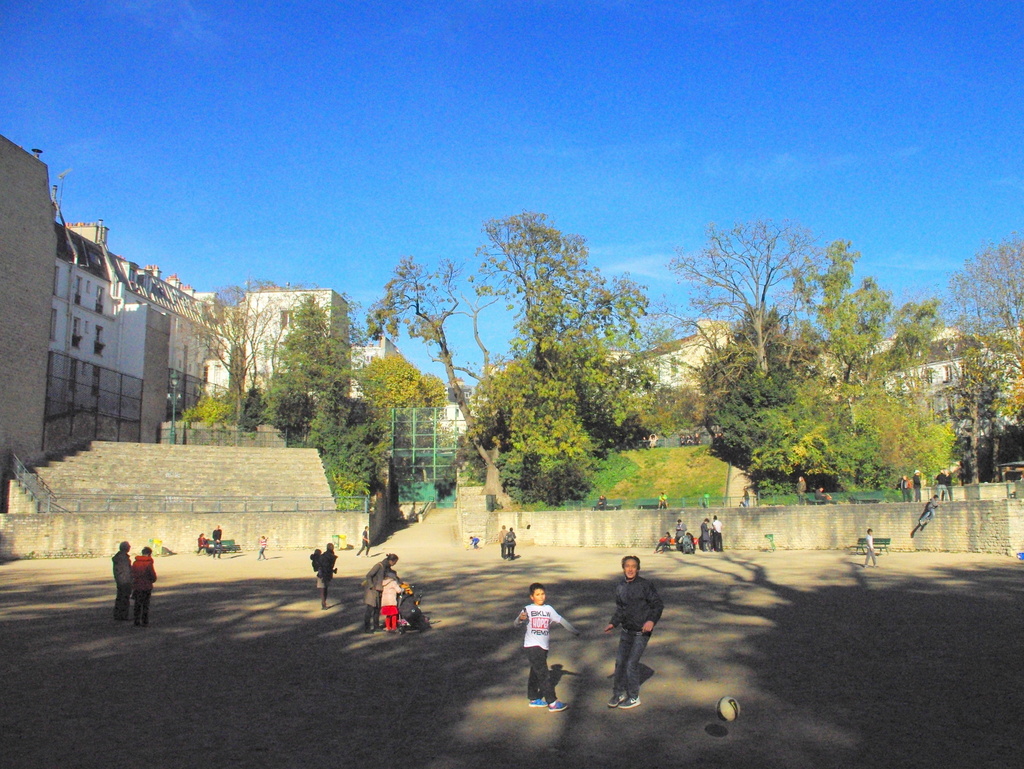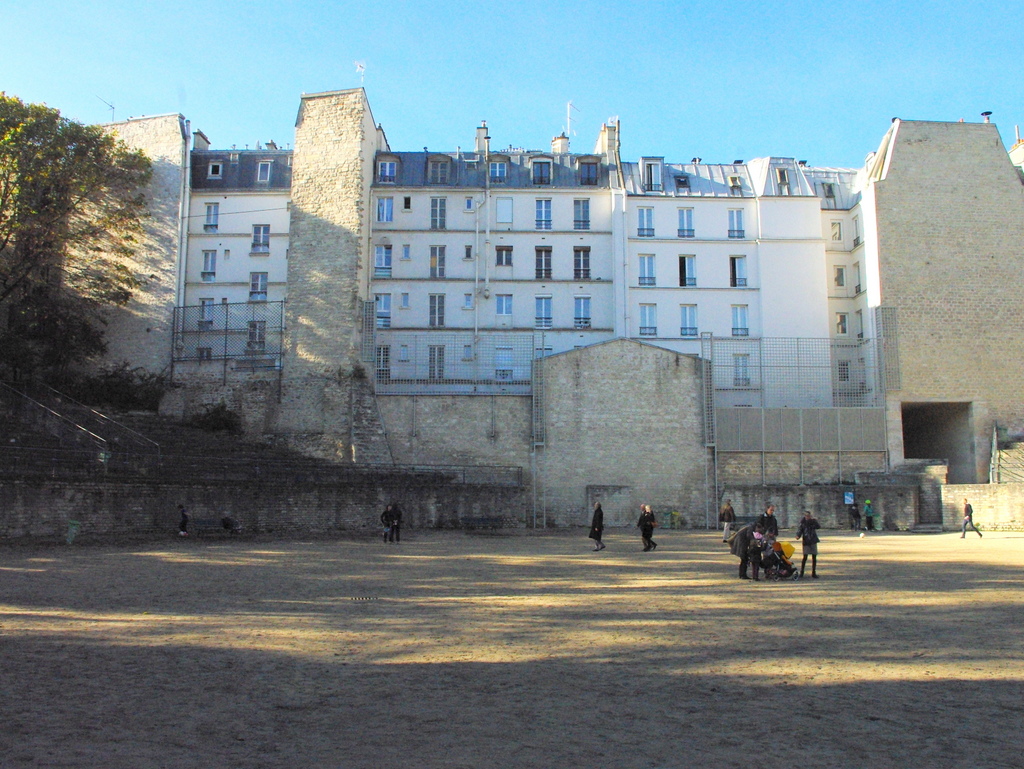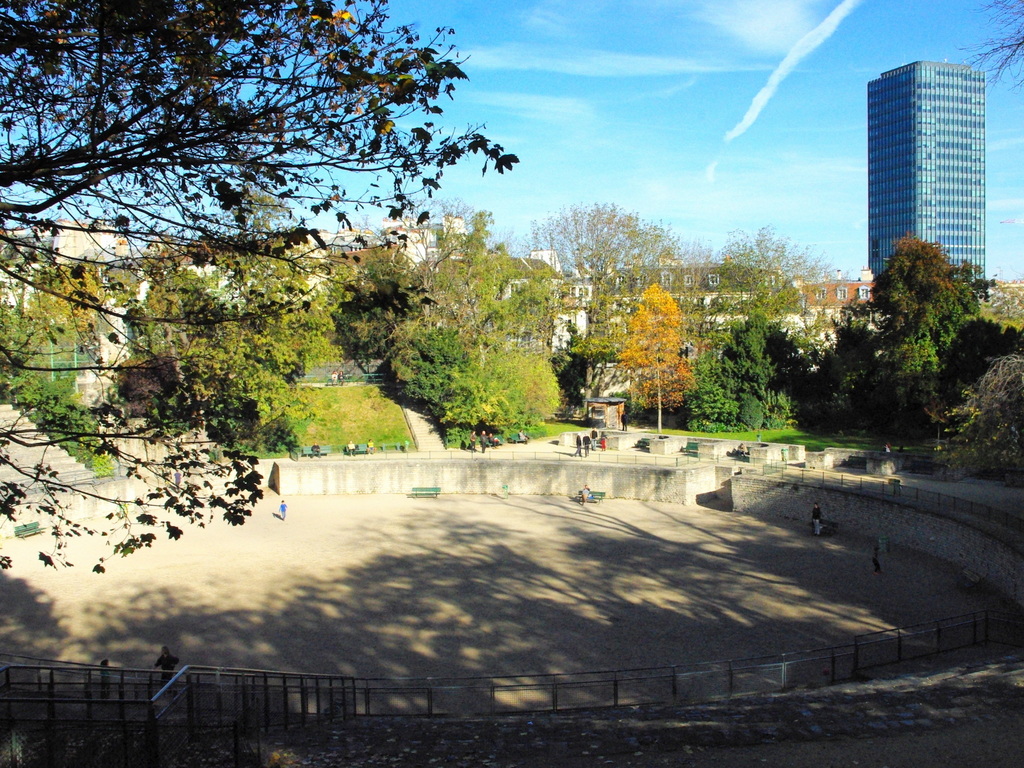Little is left visible in Paris from the Roman era. Yet, the French capital boasts a unique and rare remnant of the Gallo-Roman settlement: the Arena of Lutetia (Arènes de Lutèce). Located in the 5th arrondissement, the place is a little out of sight not far from Rue Monge and hidden in a leafy public garden opened in 1896.
Presentation of the amphitheatre

The Arènes de Lutèce were a spacious Gallo-Roman amphitheatre that was built in the 1st Century A.D. in Paris, then known as Lutetia during the Gallo-Roman era.
According to historians, the amphitheatre and its terraces could once accommodate up to 15,000-17,000 people, with a stage thought to be one of the longest in the Roman world (41m). The arena served for theatrical performances and gladiatorial combats like in many other arenas in Gaul (Nîmes and Arles).

Built on the slopes of the St. Geneviève Hill (Montagne Sainte-Geneviève), the amphitheatre had nine niches that contributed to the structure’s great acoustics. Historians believed some of the five cubbyhole-type indentations under the bleaches were animal cages that opened directly into the arena.
It seems that the amphitheatre was arranged in 35 tiers. The upper rows were reserved for the audience members of lesser financial status including peasants, women and slaves, while the lower seating area was occupied by upper-class male citizens, who comfortably sat under an awning. However, today’s tiered seating is not original and is the result of extensive restoration.
A bit of History
The amphitheatre was dismantled during the barbaric invasions of 280 A.D. when Lutetia was sacked. The stones were used to build the defensive walls around Île de la Cité and what remained in the place became a cemetery. At the time of the construction of the wall of Philip Augustus (circa 1210), the arena was completely filled in.
Since then the exact location of the Arènes was forgotten even though the neighbourhood continued to bear the name “Clos des Arènes” and was mentioned in old documents.
In 1869 during the opening of the new Rue Monge (1860-1869) which included the allocation of building plots and excavation works, Théodore Vaquer discovered the Roman remains.

Intellectuals such as French author Victor Hugo campaigned to save the remains which led the municipal council to dedicate funds for its partial restoration. In the 1860s, only one-third of the arena had been uncovered and excavation works continued until 1918.

The Arènes de Lutèce today
Today, the Arènes de Lutèce are part of a public park with three entrances where local residents have picnics, play boules and other outdoor games.
At the entrance of the square is a commemorative plaque that reads:
“C’est ici qu’a pris naissance au deuxième siècle de notre ère la vie municipale de Paris. Dix mille hommes pouvaient tenir à l’aise dans les Arènes de Lutèce où les joutes nautiques succédaient aux luttes de gladiateurs. Les combats de fauves à la représentation des comédies et des drames.
Passant songe devant ce premier monument de Paris. Que la ville du passé est aussi la cité de l’avenir et celle de tes espoirs.
Don du Syndicat d’initiatives des Arènes de Lutèce à l’occasion du bi-millénaire de Paris 1951. Texte de Jean Paulhan”

Which reads in English:
“It was here that the municipal life of Paris began in the second century of our era. Ten thousand men could fit comfortably in the Lutetian Arena, where water jousts followed gladiatorial fights. Wild animal fights followed the performance of comedies and dramas.
Passing by, one thinks of this first monument of Paris. That the city of the past is also the city of the future and of your hopes.
Donated by the Syndicat d’initiatives des Arènes de Lutèce for the bi-millennium of Paris 1951. Text by Jean Paulhan”.
Find out more about the Arènes de Lutèce
Access by an arched passageway at 47 rue Monge, admission free. Closest metro stations: Cardinal Lemoine (Line 10), Jussieu (Lines 7 and 10) and Place Monge (Line 7).
Find out more on Lutetia’s Roman amphitheatre on Wikipedia.





